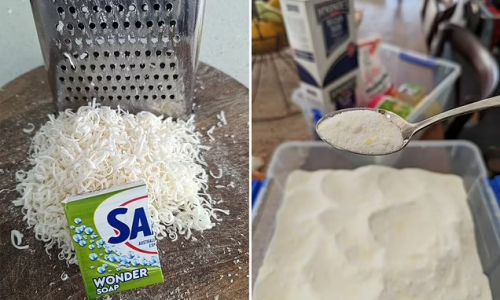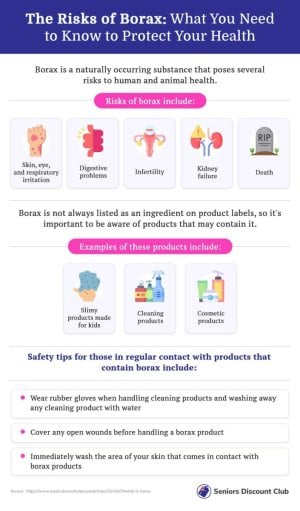Shocking DIY cleaning trick: This mum saved hundreds of dollars - but was it worth the risk?
By
- Replies 8
The increasing costs of living are leaving many people feeling the financial strain. Whether it's rent or groceries, we seem to be paying more for everything these days.
However, one area that is often overlooked is the amount we spend on cleaning products.
Many households spend a significant amount on cleaning supplies, which adds up to the bill instead of going towards other essential needs like food.
With laundry detergents seeming to get more expensive, it’s no wonder that more and more shoppers are looking for effective cost-cutting measures.
A mum has recently made the rounds on social media after she shared a DIY cleaning ‘hack’ to save hundreds of dollars.
In a post on Facebook, the homemaker caused a stir online after revealing her unusual method for making her own DIY laundry detergent.

The woman, named Meagan, stated that the ingredients only cost $20 from Woolworths and that the mix lasts ‘a minimum of nine months.'
The mum also shared her recipe for the DIY washing powder which combines ‘2kg of bicarb, 1kg of Borax, 1kg of washing soda, two bars of Velvet soap grated and half a bar of Sard Wonder Soap grated (optional, to boost the smell and for kids' stains)’.
Meagan wrote: 'I know this isn't edible, but it's a recipe and will save money.’
The recipe is also simple — all she needed to do to combine the ingredients fully was boil everything together in a 10-litre bucket.
Once the mixture was ready, she simply followed instructions for her specific washer to complete the process.
For a top loader, Meagan recommended using two-level teaspoons for a normal load or three-level teaspoons for a large 10kg load that is particularly dirty.
If you have a front loader, use only two level teaspoons of your DIY laundry detergent.
While some people online were impressed by her cost-cutting trick, the post faced backlash and warnings as many are concerned about the potentially harmful effects of using Borax.
One person pointed out: 'I don't know about washing your clothes in Borax. Borax has a warning. Warning: May impair fertility. May cause harm to an unborn child. Do not swallow. Not to be taken.’
'Please do not do this. You're going to gum up your washing machine with scrub,’ another said.
A third chimed in: ‘Please don't take it the wrong way, but Borax is for cleaning drains. To wash your clothes in it can cause irritation to the skin I would have thought.’

In response to concerns about the use of Borax in homemade laundry detergent, Meagan stated: ‘The Borax breaks down the soap. My 12-year-old machine and pipes in the laundry have not been clogged by this recipe.’
‘It has worked well for me for a long time, and many others have reported success with it as well.’

According to the cleaning website For The Love of Clean, it's best to avoid using homemade washing detergents.
These typically consist of a mixture of water softeners (such as borax, washing soda, or bicarb soda), boosters (like oxi), and soap (either grated or melted from various brands and types).
The reason for this, as explained by the website, is that homemade detergents tend to leave behind soap scum that traps soil particles in the fibres of clothing.
This is because bar soap is not designed for laundry and does not rinse clean from fabric fibres.
The website notes that bar soaps marketed for laundry are meant to be used as pre-treaters or boosters, not as detergents.
Furthermore, most versions of homemade soap are primarily composed of water softeners and boosters, which do not effectively clean clothing but rather improve the cleaning agent's ability to do so.

So, while Meagan’s post has provided an interesting insight into the world of cost-cutting, we advise that you take the advice of experts and avoid attempting this DIY laundry detergent for the meantime.
We also recommend checking out this article where we share 12 chemical-free cleaning tips that will not only save you a few dollars but will also help you stay away from harmful chemicals that may affect your health.
There you have it, folks! Do you know other cost-cutting tips for scoring affordable cleaning materials? Share them with us in the comments below!
However, one area that is often overlooked is the amount we spend on cleaning products.
Many households spend a significant amount on cleaning supplies, which adds up to the bill instead of going towards other essential needs like food.
With laundry detergents seeming to get more expensive, it’s no wonder that more and more shoppers are looking for effective cost-cutting measures.
A mum has recently made the rounds on social media after she shared a DIY cleaning ‘hack’ to save hundreds of dollars.
In a post on Facebook, the homemaker caused a stir online after revealing her unusual method for making her own DIY laundry detergent.

One mum revealed how she managed to save hundreds of dollars on cleaning detergent by making her own DIY powder. Credit: Facebook.
The woman, named Meagan, stated that the ingredients only cost $20 from Woolworths and that the mix lasts ‘a minimum of nine months.'
The mum also shared her recipe for the DIY washing powder which combines ‘2kg of bicarb, 1kg of Borax, 1kg of washing soda, two bars of Velvet soap grated and half a bar of Sard Wonder Soap grated (optional, to boost the smell and for kids' stains)’.
Meagan wrote: 'I know this isn't edible, but it's a recipe and will save money.’
The recipe is also simple — all she needed to do to combine the ingredients fully was boil everything together in a 10-litre bucket.
Once the mixture was ready, she simply followed instructions for her specific washer to complete the process.
For a top loader, Meagan recommended using two-level teaspoons for a normal load or three-level teaspoons for a large 10kg load that is particularly dirty.
If you have a front loader, use only two level teaspoons of your DIY laundry detergent.
While some people online were impressed by her cost-cutting trick, the post faced backlash and warnings as many are concerned about the potentially harmful effects of using Borax.
One person pointed out: 'I don't know about washing your clothes in Borax. Borax has a warning. Warning: May impair fertility. May cause harm to an unborn child. Do not swallow. Not to be taken.’
'Please do not do this. You're going to gum up your washing machine with scrub,’ another said.
A third chimed in: ‘Please don't take it the wrong way, but Borax is for cleaning drains. To wash your clothes in it can cause irritation to the skin I would have thought.’

The DIY cleaning powder faced backlash after many users pointed out how one of its ingredients, Borax, is harmful to people. Credit: Facebook.
In response to concerns about the use of Borax in homemade laundry detergent, Meagan stated: ‘The Borax breaks down the soap. My 12-year-old machine and pipes in the laundry have not been clogged by this recipe.’
‘It has worked well for me for a long time, and many others have reported success with it as well.’
Key Takeaways
- A mum shared a DIY cleaning 'hack' on social media, revealing her homemade laundry detergent recipe that claims to save hundreds of dollars.
- The post faced backlash and warnings from people concerned about the potentially harmful effects of using Borax for washing.
- In response to these concerns, the mum stated that the recipe had worked well for her and others for a long time without issues.
- According to the cleaning website For The Love of Clean, homemade detergents can leave behind soap scum and are not recommended.
According to the cleaning website For The Love of Clean, it's best to avoid using homemade washing detergents.
These typically consist of a mixture of water softeners (such as borax, washing soda, or bicarb soda), boosters (like oxi), and soap (either grated or melted from various brands and types).
The reason for this, as explained by the website, is that homemade detergents tend to leave behind soap scum that traps soil particles in the fibres of clothing.
This is because bar soap is not designed for laundry and does not rinse clean from fabric fibres.
The website notes that bar soaps marketed for laundry are meant to be used as pre-treaters or boosters, not as detergents.
Furthermore, most versions of homemade soap are primarily composed of water softeners and boosters, which do not effectively clean clothing but rather improve the cleaning agent's ability to do so.

An infographic on the risks of Borax and how you can keep yourself safe from its effects. Credit: Seniors Discount Club.
So, while Meagan’s post has provided an interesting insight into the world of cost-cutting, we advise that you take the advice of experts and avoid attempting this DIY laundry detergent for the meantime.
We also recommend checking out this article where we share 12 chemical-free cleaning tips that will not only save you a few dollars but will also help you stay away from harmful chemicals that may affect your health.
There you have it, folks! Do you know other cost-cutting tips for scoring affordable cleaning materials? Share them with us in the comments below!







